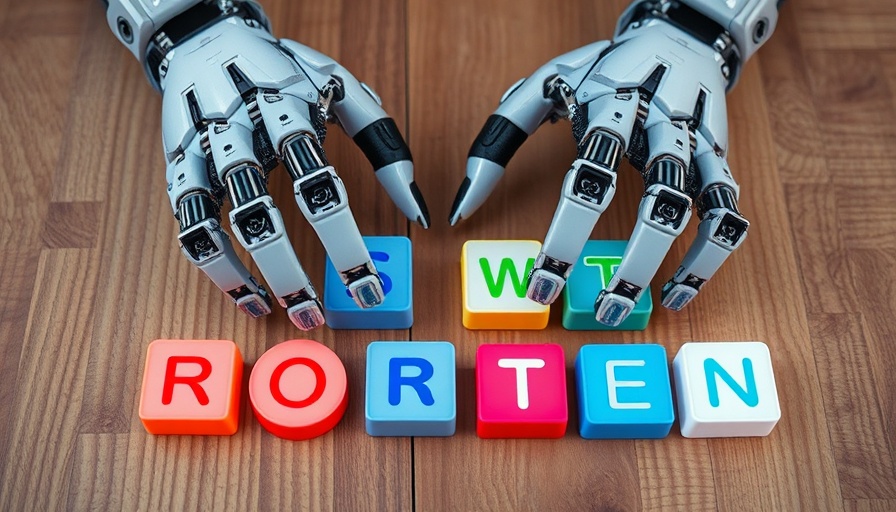
Unveiling Google's Gemini Robotics: A Leap Towards Intelligent Machines
In March 2025, Google DeepMind introduced us to its Gemini Robotics, a game-changing advancement that aims to revolutionize human-robot interaction. Through the innovative Gemini 2.0 framework, these robots are designed to grasp, understand, and respond to our physical world in ways previously thought impossible.
Astonishing Capabilities of Gemini Robotics
The core of Gemini Robotics lies in its advanced vision-language-action (VLA) model, unlocking solutions to real-world tasks through embodied reasoning. This technology does not just allow robots to complete pre-programmed tasks but enables them to adapt in real-time to new challenges in dynamic environments. For instance, a robot trained with Gemini Robotics can understand spoken instructions to pack a lunchbox even with unfamiliar items on the table — a monumental leap in ensuring robots are versatile and easy to interact with.
Enhancing Dexterity for Complex Tasks and Safety
One of the standout features of the Gemini Robotics models is their dexterity. Robots can now handle delicate tasks such as folding paper or manipulating small objects with precision, reminiscent of human capability. The implications of this are vast — from cooking to healthcare, the enhanced abilities could soon allow robots to assist in a myriad of daily tasks and professional environments.
In terms of safety, Google is taking responsible measures by embedding safety protocols directly into the AI's decision-making process. Models like Gemini Robotics-ER possess an advanced feature that enables them to assess the safety of actions they are about to take, ensuring a smoother integration into homes and workplaces where human interaction is continual.
AI’s Future: Autonomous Helpers in Our Everyday Lives
The announcement of Gemini Robotics signifies only the early stages of a future where humanoid robots may assist us daily. Google is not the only player aiming for this future; other companies and research organizations are equally invested in advancing AI capabilities. As robots gain the ability to comprehend intricate instructions and perform tasks without prior specific training, the potential applications are limitless — from educational tools to personal assistants.
Understanding the Broader Context of AI Advancements
Reflecting on technology's history shows how far we've come. When AI first entered the public consciousness through platforms like ChatGPT, the idea of machines understanding human commands was merely speculative. Fast forward to today, and we are on the cusp of integrating AI into our physical worlds comprehensively. As Google collaborates with leading robotics companies to realize intelligent humanoid robotics, we experience a massive shift in how we define intelligence and assistance in our lives. The blend of AI with robotics signifies a transformative period for technology that melds the digital and physical realms in unprecedented ways.
What Does This Mean for Society?
The evolution of Gemini Robotics and its capabilities poses intriguing questions about our interaction with AI. Will we embrace robots as household helpers, or will there be resistance rooted in concerns over job displacement and safety? The combination of advanced reasoning and dexterity might alleviate fears, but societal acceptance will ultimately hinge on trust and perceived benefit. Leveraging technology positively could lead to a future where robots empower humans rather than replace them.
As this exciting domain unfolds, individuals interested in technology must stay informed about AI advancements and their implications. Understanding evolving AI technologies, particularly in robotics, may offer insights into making the most of these innovations in everyday life.
For the latest insights and news about exciting advancements in technology, subscribe to our newsletter and empower yourself with knowledge about the future shaping our world.
 Add Row
Add Row  Add
Add 




 Add Row
Add Row  Add
Add 

Write A Comment